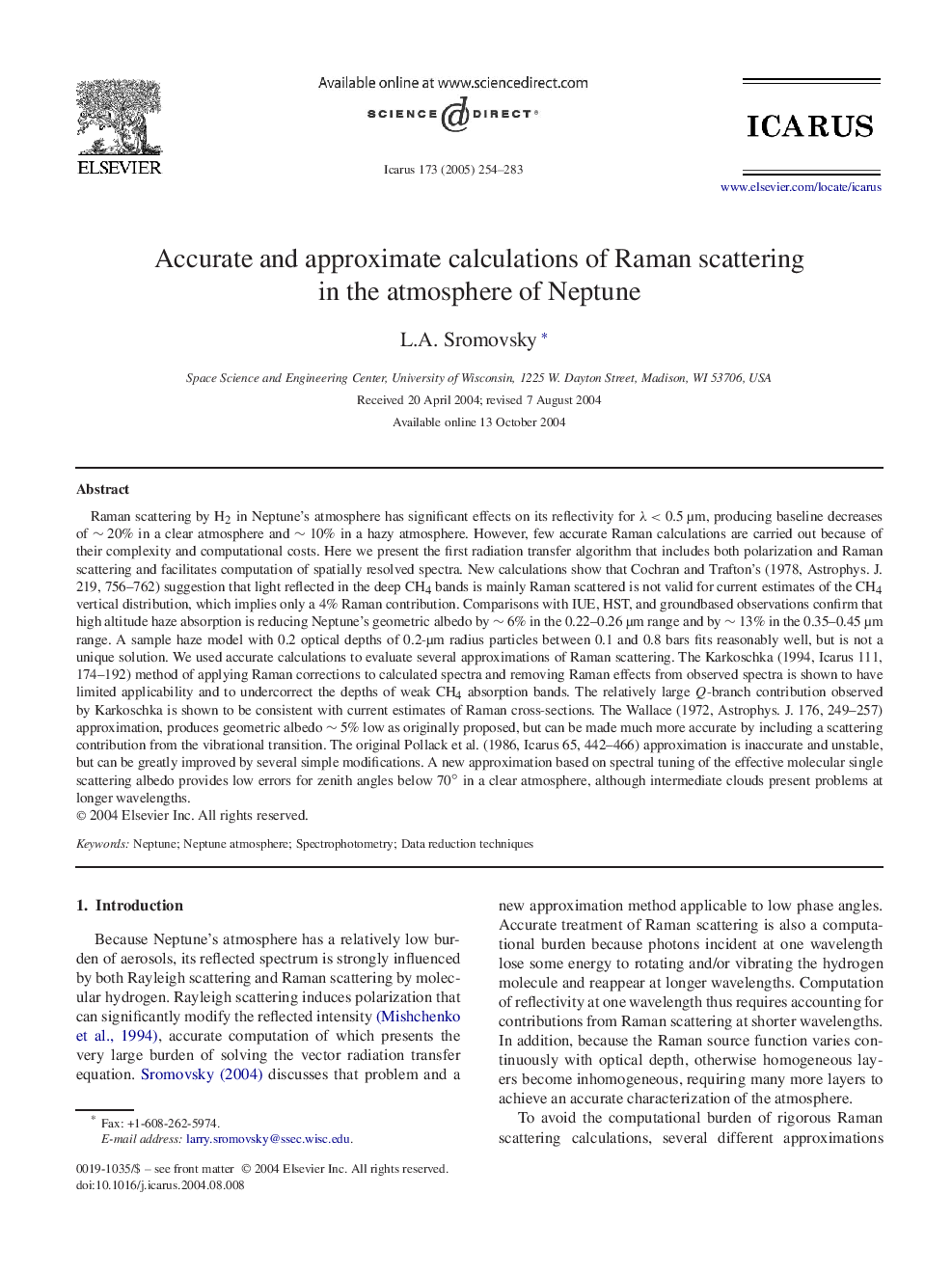| Article ID | Journal | Published Year | Pages | File Type |
|---|---|---|---|---|
| 10702007 | Icarus | 2005 | 30 Pages |
Abstract
Raman scattering by H2 in Neptune's atmosphere has significant effects on its reflectivity for λ<0.5 μm, producing baseline decreases of â¼20% in a clear atmosphere and â¼10% in a hazy atmosphere. However, few accurate Raman calculations are carried out because of their complexity and computational costs. Here we present the first radiation transfer algorithm that includes both polarization and Raman scattering and facilitates computation of spatially resolved spectra. New calculations show that Cochran and Trafton's (1978, Astrophys. J. 219, 756-762) suggestion that light reflected in the deep CH4 bands is mainly Raman scattered is not valid for current estimates of the CH4 vertical distribution, which implies only a 4% Raman contribution. Comparisons with IUE, HST, and groundbased observations confirm that high altitude haze absorption is reducing Neptune's geometric albedo by â¼6% in the 0.22-0.26 μm range and by â¼13% in the 0.35-0.45 μm range. A sample haze model with 0.2 optical depths of 0.2-μm radius particles between 0.1 and 0.8 bars fits reasonably well, but is not a unique solution. We used accurate calculations to evaluate several approximations of Raman scattering. The Karkoschka (1994, Icarus 111, 174-192) method of applying Raman corrections to calculated spectra and removing Raman effects from observed spectra is shown to have limited applicability and to undercorrect the depths of weak CH4 absorption bands. The relatively large Q-branch contribution observed by Karkoschka is shown to be consistent with current estimates of Raman cross-sections. The Wallace (1972, Astrophys. J. 176, 249-257) approximation, produces geometric albedo â¼5% low as originally proposed, but can be made much more accurate by including a scattering contribution from the vibrational transition. The original Pollack et al. (1986, Icarus 65, 442-466) approximation is inaccurate and unstable, but can be greatly improved by several simple modifications. A new approximation based on spectral tuning of the effective molecular single scattering albedo provides low errors for zenith angles below 70° in a clear atmosphere, although intermediate clouds present problems at longer wavelengths.
Related Topics
Physical Sciences and Engineering
Earth and Planetary Sciences
Space and Planetary Science
Authors
L.A. Sromovsky,
